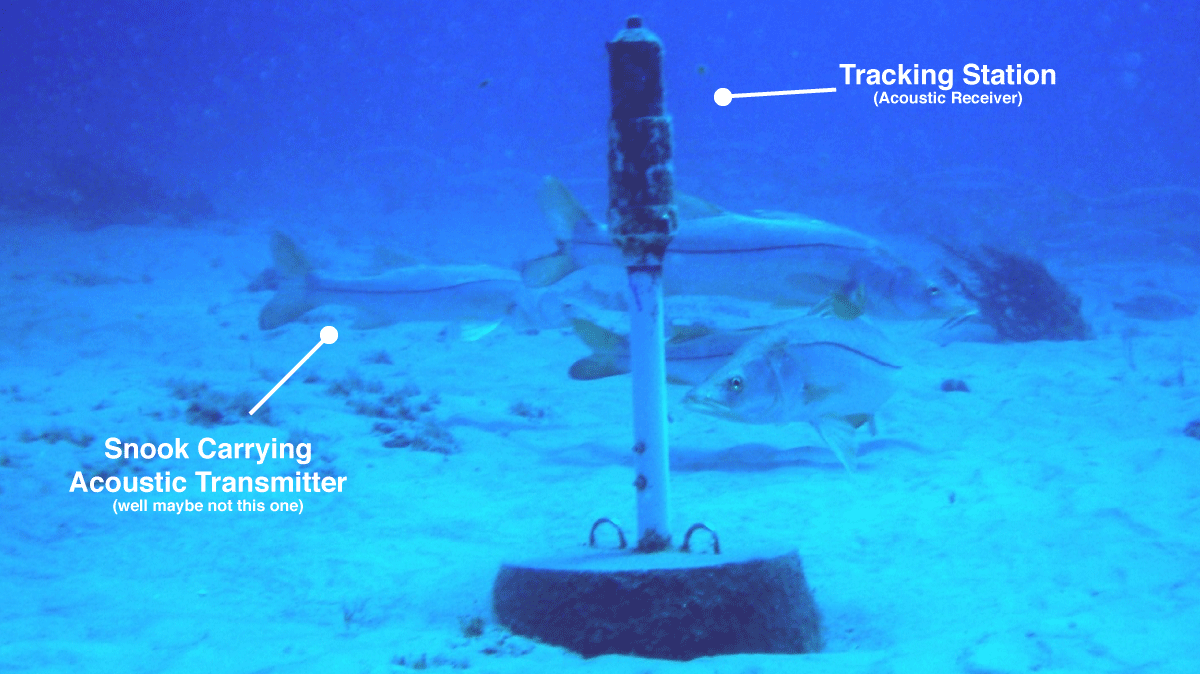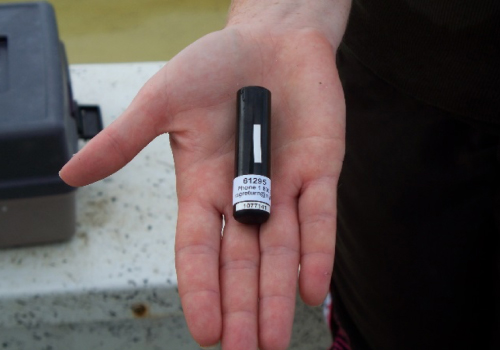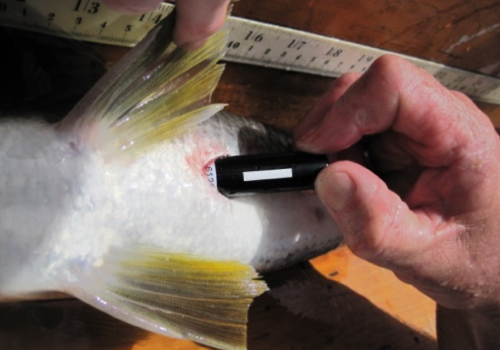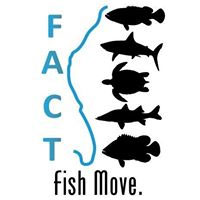
Acoustic receiver now monitoring a reef near Jupiter, Florida. Our FACT Network receivers are deployed in many different ways depending on location and habitat. These receivers can typically hear passing animals from 300 – 1000 meters away. Image Credit: Erick Ault

A medium-sized acoustic transmitter with a 5-year battery life that “pings” every 1-3 minutes. Image Credit: Erik Ault

A transmitter being internally implanted into a common snook. Image Credit: Erik Ault
